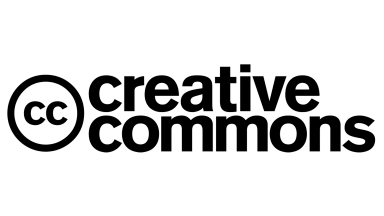Image is illustrative
What is Plagiarism?
Plagiarism, as defined in the Merriam Webster and the Collins Dictionary, in short means to steal someone’s work (words or/and ideas) and represent it as your own. But is it actually so simple? Is copying one paragraph of someone’s writing the same as copying just a few sentences here and there? And what if you included a suitable quote you heard somewhere but really couldn’t remember who wrote it? You certainly didn’t mean to steal it, did you?
Well, in short – it all counts as plagiarism. But different kinds. You can find more about those as well as tips on ethical sourcing in the Library Literacy page of our Resource Pool. Revert back to this page to find out about the tools out there for students and educators to use.
Plagiarism Checker Tools
You might have already heard about the mighty tool for plagiarism checking called Turnitin. It is widely used in universities across Europe. What this tool does is scan the student’s digitally submitted paper to the system and identifies any content that is similar to what it finds already published on the internet. That includes both academic and non-academic sources. Based on this technology, in addition to the paper checker for teachers, Turnitin has developed writing-aid solutions for students (revision assistant™ and feedback studio™).
Turnitin has also created another tool for educators: Plagiarism Spectrum – an easy-to-remember list of 10 types of plagiarism based on the results of their survey of nearly 900 instructors in secondary and higher education (Turnitin, 2020):
- Clone: Submitting another’s work, word-for-word, as one’s own;
- CTRL+C: Contains significant portions of text from a single source without alterations;
- Find-Replace: Changing key words and phrases but retaining the essential content of the source;
- Remix: Paraphrases from multiple sources, made to fit together;
- Recycle: Borrows generously from the writer’s previous work without citation;
- Hybrid: Combines perfectly cited sources with copied passages without citation;
- Mashup: Mixes copied material from multiple sources;
- 404 Error: Includes citations to non-existent or inaccurate information about sources;
- Aggregator: Includes proper citation to sources but the paper contains almost no original work;
- Re-Tweet: Includes proper citation, but relies too closely on the text’s original wording and/or structure;
We highly recommend that you check out Turnitin Resources for guides, lessons, quizzes and webinars that help advance student’s learning. They also aggregate resources from other providers, such as this Teacher Resource Packet from NewsGuard for a media literacy lesson through the lens of COVID-19 misinformation.
Okay, but what about using available media like pictures, GIFs, photos, infographics, videos or music?
Plagiarism.org is a good resource to refer to regarding these questions. It lists all of the following activities as examples of plagiarism (quoted from the source):
- Copying media (especially images) from other websites to paste them into your own papers or websites.
- Making a video using footage from others’ videos or using copyrighted music as part of the soundtrack.
- Performing another person’s copyrighted music (i.e., playing a cover).
- Composing a piece of music that borrows heavily from another composition.
But consider this situation: you see something hilarious happening outside the store, you rush out, pop your phone camera on and start recording. Then you post it up on your Instagram, Snapchat, maybe event YouTube and Facebook. What you didn’t notice was that all the way through your video your phone’s microphone recorded almost half of Beyonce’s ‘Crazy in Love’ song playing from the nearby cafe. What would you do?
Well, given that the algorithms of YouTube and Facebook have neither prevented you from uploading this content nor marked your video as ‘suspicious’, it would be wise to take the video down, mute the original sound, add some free-courtesy music if you like (which can be found on sites such as Pixabay and Artlist.io) and post it to your social networks. Plagiarism.org recommends avoiding such cases altogether or at least finding out about the sharing permissions of the song/multimedia you borrowed from and citing them in the proper way. The latter brings us to the second part of this article – citations.
Citations & References
Citing your sources is the safest way to go when using anyone else’s content. You should always be aware of where the information comes from, unless it is “common knowledge” – in which case you don’t need to use citation. You should remember though that certain sources may have heavier restrictions on using their content than others. This is usually stated at the beginning or end of the content piece and often enough provides a Creative Commons sign that looks like this:

If you see it, check which type of copyright it has and what it allows you to do. You can find helpful information on this in the Copyrights section of our Resource Pool.
How to properly cite someone’s work?
So, let’s imagine you have borrowed a quote from someone’s book. How do you cite it? Well, you should consider several things:
- Citing the sources inside the text of your paper
- Adding short and long quotes inside your text
- Listing bibliography & references
- Placing footnotes and endnotes
You can find further explanations of each of the above points in this article. Basically, if your paper has any of these points, it shows the reader you understand what you are writing about, you use a quality information basis for your work, it is supported by the sources and it is therefore more credible. Youth workers should motivate young people to make it a habit to support their thinking and writing with external quality sources and be able to use citations to show responsible behaviour. In other words, the use of citations and respect of copyrights should be perceived positively as a code of conduct, rather than a set of rules that must not be violated.
NB!: When citing someone’s work or checking your sources, make sure you have at least the following: author’s full name, name of the published work, publication year, resource in which the publication was made (a journal, a magazine, a website) and, if possible, the link to the page where the cited work can be found.
Referencing styles
In academic writing, there are several ways you can use reference work. It is best to ask the teacher which one you should use before you edit and submit the paper. Here are a few of the most common ones: APA, Harvard, MLA, Chicago, ASA, IEEE, AMA. You can find about the differences of these and guidance on how to use them on CiteThisForMe.
To save time, you can find different reference builders online like this one that can help you create a reference in the desired style.
You can also view this short YouTube video on writing citations: https://www.youtube.com/watch?v=JHSyBxheiT0
Further reading:
Preventing plagiarism when writing
www.plagiarism.orgWhat is Creative Commons anyway?
www.plagiarism.orgHow do I cite sources?
www.plagiarism.orgHow to paraphrase?
www.plagiarism.orgPlagiarism spectrum
www.turnitin.comTurnitin resources
www.turnitin.comAPA Citation Generator
www.citethisforme.comChildnet Lesson Plan, Presentation and Lesson Sheet
www.childnet.comCopyright & Plagiarism 101
www.hrank.comCitations 101
www.youtube.com





